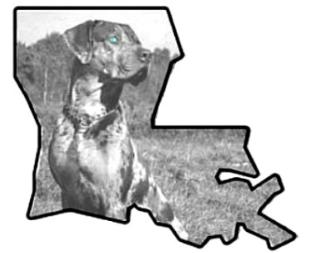| Music: Old Dogs, Children and Watermelon Wine Whispers - Home Old New Orleans Nancy's Journal |
| Photo Credits: Wikimedia.Commons and the following photographers: BrittaWeißenborn, Nagygabornet, Boygobig, Sasquatchcatahoula |
| Please don't use the 'Send page' feature of your computer to send this entire page in an e-mail message or a document format or post portions of the page to social media sites. This separates the page from its source. If you'd like to share it, please just send the link. The link to this page is: http://www.thepastwhispers.com/Louisiana_Catahoula.html |
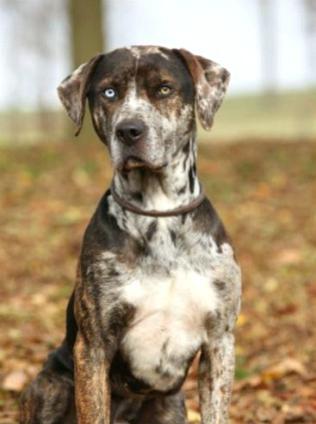

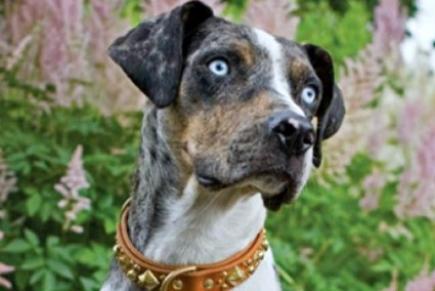
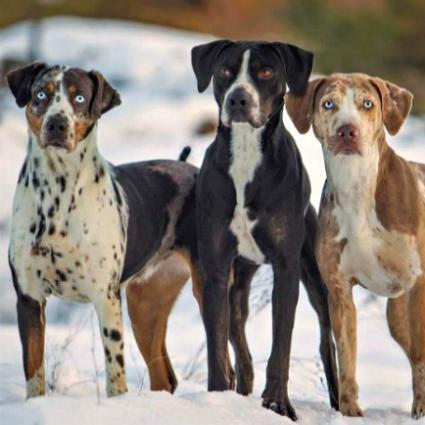



| Louisiana Catahoula Leopard Dog |
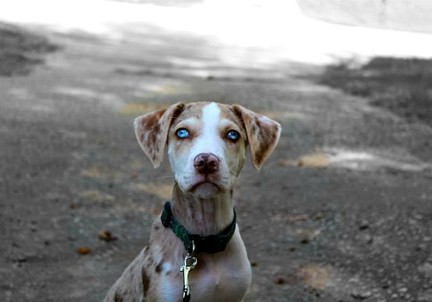
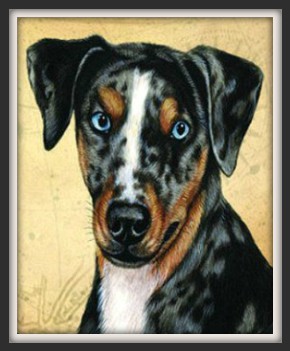
| When we adopted our dog, Navi, from the shelter last Fall, we thought she was a unique dog, both in appearance and personality, but we had no idea what kind of dog she was. My husband and I kept thinking of breeds she might resemble, but none seemed right. A few weeks had gone by before I noticed a line on the vet's report that accompanied her adoption papers. It read: "Breed: Louisiana Catahoula / Color: Blue Leopard." We had our answer, which led to more questions, because we weren't at all familiar with Catahoulas (a little embarrassing, considering the Catahoula is Louisiana's state dog and we're from Louisiana - but, in our defense, Catahoulas are often used for hunting or herding, and we've never hunted or herded :-). I did some research and learned that Catahoulas have a long history - in fact, possibly one of the longest histories of any dog in North America. For many reasons, they are a unique breed, truly a breed apart - not only for the common traits of their breed, but for the differences within it. I purchased a book, "Catahoula," by John Slaughter, who is a very talented photographer. He's been taking pictures of Catahoulas for many years and the beauty of the photographs is a tribute to his talent and clearly shows his love for these incredible dogs. As to their differences from other breeds and within their own, Mr. Slaughter writes: "Catahoulas are difficult to define. It's as if aliens came to earth, took the form of dogs, and are trying to figure out how to be typically 'doglike.'" They may have trouble being 'doglike,' but they have no trouble being devoted, loving and intelligent companions. At least, that's the case with one Louisiana Bobtailed Blue Leopard Catahoula named Navi. -- Nancy |
| Intelligent ~ Energetic ~ Devoted ~ Protective |
| _______________________________________________ |

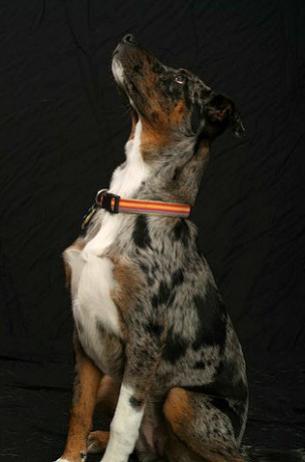

| One theory regarding the word 'Catahoula' is that it's a combination of two Choctaw words 'okhata', meaning lake, and 'hullo', meaning beloved or sacred. This would be in reference to Catahoula Lake, in Louisiana, where the breed originated. Another possibility is that the word is a French transformation of the Choctaw word for their own nation, 'Couthaougoula.' When Spanish explorer, Hernando de Soto, began his expedition through the modern-day southeastern United States in the 1500's, his scribes noted they had only seen one species of domestic animal in North America, the Native Americans' dog - who, they wrote, looked like a wolf, but barked like a dog. Researchers have reason to believe that, in what is now central Louisiana, the Choctaws' dogs were crossed with the mastiffs and greyhounds brought by the Spanish explorers, and this produced the first version of the Catahoula. When French settlers arrived in Louisiana with their Beauceron dogs, they told of strange looking dogs with haunting glass eyes, used by the Native Americans to hunt game in the swamp. Some believe that the French Beauceron and the descendants of native dogs and Spanish war dogs were interbred to give us the Catahoulas we know today. |
| Catahoulas come in many different colors, including blue merle, red merle, brindle and even solid colors. Most Catahoulas have a white stripe on their faces, going from muzzle to forehead. Our dog, Navi, has a bobtail, which is a natural part of the Catahoula heritage. But, now, unless specifically bred for this trait, the percentage of a bobtail occurring naturally is small. When she perks her ears up, Navi has one ear that more or less goes down and one ear that goes a little sideways. I thought that this must have been the result of an old injury, but, curiously, I've seen three different Catahoulas in photos online with ears like Navi's. Maybe just a coincidence? Catahoulas often have cracked glass or marbled glass eyes, which occurs when both colored and glass portions are present in the same eye. Cracked glass or marbled glass eyes are blue or blue-white in color; they may be half of one color and half of another. Catahoulas have a better chance of having one eye of one color and the other of a different color than most breeds. One of Navi's eyes is blue-white. I don't know what the other one was, because she sustained an injury to her eye before arriving at the SPCA and the result of the injury left her blind in that eye and it has a film over it. But she can still spot a squirrel at 100 yards and, possibly thanks to an ancient greyhound gene, she can very nearly catch it. Thankfully, she hasn't managed to do that yet. |

| By the middle of the 20th century, Catahoulas were rapidly becoming extinct. They may not have survived if it wasn't for the attention given to them by Louisiana governor, Earl Long. He liked the breed so much that he started collecting them as he traveled around the state. He would send them to Louisiana State Police Headquarters to be cared for. He bred the best of the breed and brought Catahoulas back from the brink of extinction. Today, the Louisiana Catahoula can be found all over the country and, in fact, all over the world. In 1979, Gov. Edwin Edwards signed a bill making the Catahoula the official state dog of Louisiana, in recognition of their importance in the history of the region. |

| ~ Navi ~ |

